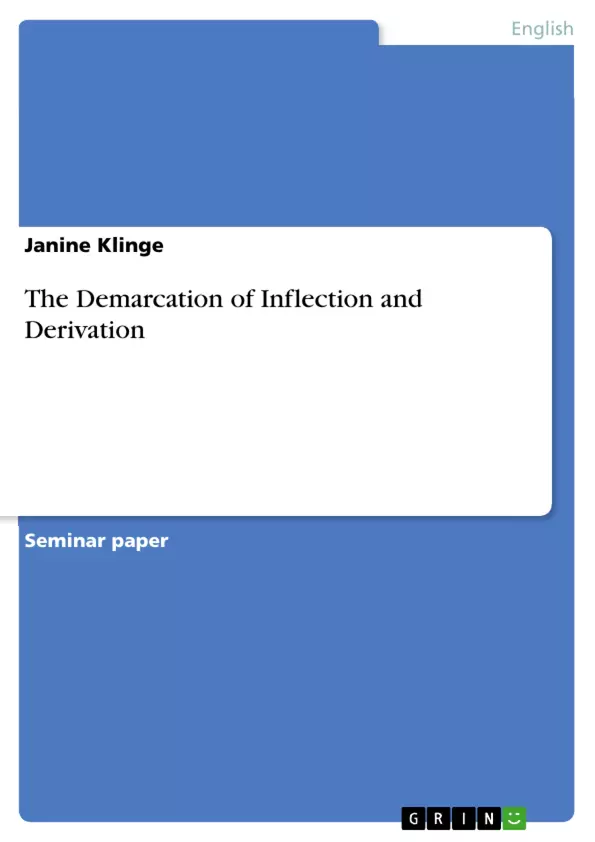Inflection and derivation are traditional concepts in the field of morphology, the subdiscipline of linguistics that concentrates on the internal structures of words. Despite the ascribed central role in linguistics, the distinction between inflection and derivation is far from clear-cut. Linguistic textbooks or publications used to treat the fields of inflectional and derivational morphology as two clearly distinguishable categories but on closer examination the boundaries between both processes turn out to be a lot fuzzier. “The question of how inflection can be distinguished from derivation is one of the classical problems addressed by structuralist linguistics.” . During the last decades many linguists have already focussed on this lack of clear distinctions with the aim to find a universally valid definition for both categories, but the concepts of inflectional and derivational morphology “are notoriously easier to illustrate than to define.”2 We will first turn towards a broad selection of criteria that have been argued to distinguish inflection and derivation. These criteria have been proposed to put the dichotomy on a firmer theoretical footing which is important since much morphological theorising is based on the assumption that morphological processes fall into these two broad categories – inflection and derivation.
Inhaltsverzeichnis (Table of Contents)
- Introduction
- The Demarcation of Inflection and Derivation
- Obligatoriness
- Syntactic Relevance
- Change of Syntactic Category
- Paradigm
- Semantic Differences
- Theory of Split Morphology
- Conclusion
Zielsetzung und Themenschwerpunkte (Objectives and Key Themes)
This term paper delves into the complex distinction between inflection and derivation in morphology. The author examines the traditional understanding of these concepts, highlighting the challenges in defining clear boundaries between them. The paper aims to provide a comprehensive overview of criteria used to distinguish inflection from derivation and explore the validity of these criteria, particularly in light of existing counterexamples.
- Defining the distinction between inflection and derivation
- Exploring the criteria used to differentiate inflectional and derivational processes
- Analyzing the concept of obligatory vs. optional morphological processes
- Investigating the syntactic relevance of inflection and derivation
- Examining the role of paradigms and semantic differences in distinguishing inflection and derivation
Zusammenfassung der Kapitel (Chapter Summaries)
- Introduction: This chapter sets the stage for the paper, introducing the fundamental concepts of inflection and derivation in morphology. It highlights the ambiguity in distinguishing these two processes and emphasizes the need for a comprehensive understanding of their differences.
- The Demarcation of Inflection and Derivation: This chapter presents various criteria that have been proposed to distinguish inflection from derivation. It discusses the concepts of obligatoriness, syntactic relevance, change of syntactic category, paradigm formation, and semantic differences, outlining their roles in delineating these two morphological processes.
Schlüsselwörter (Keywords)
Morphology, inflection, derivation, obligatoriness, syntactic relevance, paradigm, semantic differences, split morphology.
- Quote paper
- B.A. Janine Klinge (Author), 2010, The Demarcation of Inflection and Derivation, Munich, GRIN Verlag, https://www.grin.com/document/180135




